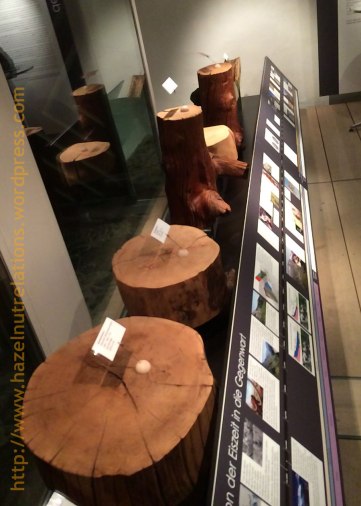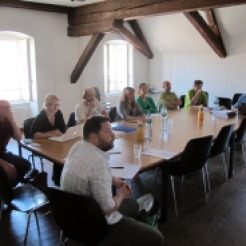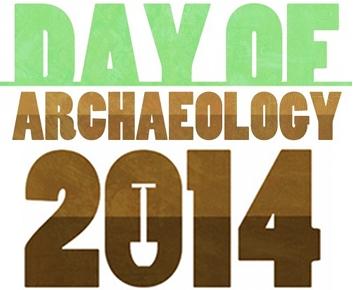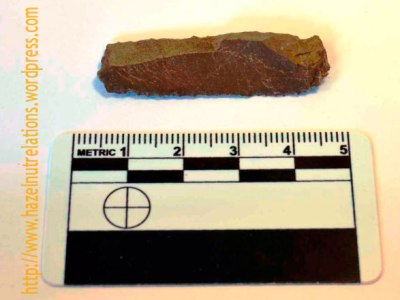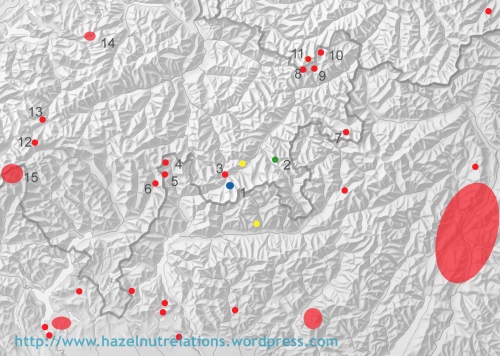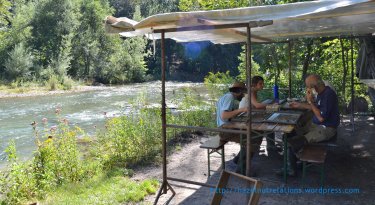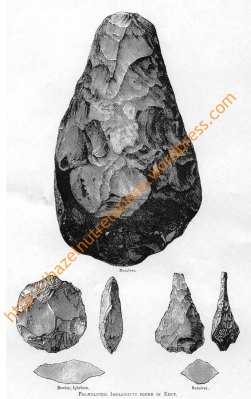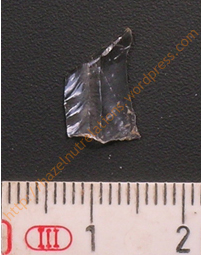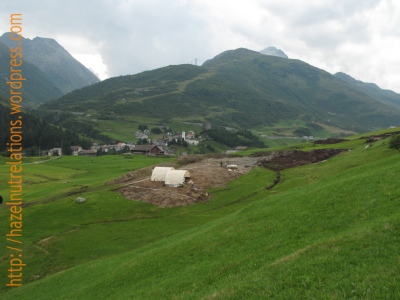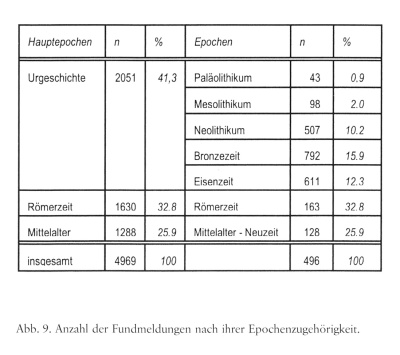Last summer part of my holidays was spend with friends in a rock-shelter in the pitoresque Bisistal in central Switzerland. A badger had dug his/her sett in the abri and, doing so, brought up a few bones and charcoal. These were discovered by Walter Imhof, a speleogist, who has discovered and surveyed many sites and caves over the past decades. A small test-trench resulted in some stratified charcoal which was dated to the ninth millenium BC. After more bones and a rock crystal flake were found, it was decided to start a small excavation, organised by Walter Imhof and Urs Leuzinger. We dug a two by two meter trench where the archaeology was most threatened to be disturbed by further digging by our friend the badger, as well as a few more test-trenches to see if there were more areas of occupation.

Abri Berglibalm, Bisistal (Muotathal, Switzerland) during excavation, August 2015.
The results were fantastic! Worked bone finds from caves dating to the Early Mesolithic had been known from caves in the region, but now we found a decent collection of lithic artefacts (total 285, incl. 10 microliths) and faunal remains in a well-stratified, charcoal rich layer (probably the replaced remains of a fire-place). This greatly improves our knowledge of the Mesolithic in the alpine regions of Central Switzerland. Also, it was a fab week with friends and colleagues and a great break from the work on the PhD. Nothing better to clear your mind then listening to yodelling (as well as, sadly, quite a bit of german schlager music of a lesser quality) and friends snorring for a week, drinking mediocre beer, stomping up a hill every morning through a field consisting entirely of cow pads, breaking your back sieving, breakfasting with amazing cheeses and excavating great archaeology!
Mostly due to the fantastic engagement of Urs Leuzinger and the rest of the team, the site has already been comprehensively published in the Annuaire d’Archéologie Suisse (Leuzinger et al, 2016). It includes lithic analysis, ltihic raw-material provencing, charcoal-, palaeobotanical- and faunal analyses. It’s well worth a look!
Zusammenfassung
Die Fundstelle Berglibalm befindet sich in der Gemeinde Muotathal im Bisistal auf 1140 m ü.M. In der 4 m2 grossen Grabungsfläche von 2015 konnte eine frühmesolithische Schicht aus der Zeit um 8100 v.Chr. dokumentiert werden. Die vorhandene Holzkohle belegt Hasel und Ahorn als bevorzugtes Brennmaterial. Daneben kamen viele gut erhaltene Faunenreste, wenige botanische Makroreste sowie ein lithisches Inventar mit 285 Artefakten, darunter 10 Mikrolithen, zum Vorschein. Der Abri diente als Lagerplatz für mittelsteinzeitliche Jäger, die im hinteren Bisistal Jagd auf Steinbock, Gämse, Hirsch und Wildschwein machten.Résumé
La Berglibalm est un abri sous roche mésolithique situé dans la vallée du Bisistal (commune de Muotathal), à 1140 m d’altitude. La surface fouillée en 2015, couvrant 4 m2, a livré une couche du Mésolithique ancien datée d’environ 8100 av. J.-C. On y recense des concentrations de charbons de bois – le noisetier et l’érable comme combustibles principaux. Le site a livré de nombreux restes de faune bien conservés, quelques macrorestes botaniques, ainsi qu’une industrie lithique comprenant 285 artefacts, dont 10 microlithes. L’abri servait de campement à des chasseurs mésolithiques à la quête aux bouquetins, chamois, cerfs et sangliers des régions d’altitude du haut de la vallée du Bisistal.
Bibliography
Full publication:
Leuzinger, U., Affolter, J., Beck, C., Benguerel, S., Cornelissen, M., Gubler, R., Haas, J. N., Hajdas, I., Imhof, W., Jagher, R., Leuzinger, C., Leuzinger, C., Leuzinger, P., Müller, W., Pümpin, C., Scandella, S., Scandella, T., Schoch, W. & Warburton, M., 2015, Der Frühmesolithische Abri Berglibalm im Bisistal, Gemeinde Muotathal (SZ), in Jahrbuch Archäologie Schweiz, Vol. 99, 7-26
Popular short text about the site:
Leuzinger, U. 2016, Dachs entdeckt Steinzeitfunde, in Archäologie in Deutschland, Nr. 1.
A short summary (EN) of the first preliminary results can also be found here:
Cornelissen, M. and Reitmaier, Th., In press, Filling the gap. Recent Mesolithic discoveries in the central and south-eastern Swiss Alps, in Quaternary International (to be published 2016; Click here for more infos / a PDF of corrected proof.




